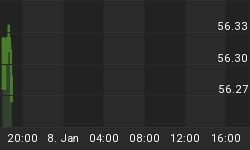As time passes at the top of the largest and most "assisted" markets in history, the experiences from across the world only continue to widen further from the reality of the day-to-day lives and economic experiences on the ground.
On January 5th, I posted, "As India Destroys Cash, It Crushes People". If you have yet to read it, check it out and compare those comments and video with what is in this post.
India continues in crisis.


Monetary theory holds that the general price of goods and services is directly proportional to the amount of money in circulation, i.e. the money supply. The plunge in the money supply this year coincides with the removal of so much cash effective January 1st.
When a declaration is made where 85% of the currency in circulation across a nation of 1.3 billion people is banned in less than 2 months, is it any wonder that the money supply has plummeted?

Jayant Bhandari's comments takes us from theory to daily life.
"I have yet to meet anyone in India — including anyone from the ranks of demonetization supporters — whose economic life has improved. People are still avoiding to go shopping. Businesses continue to fail. And food prices are still down by as much as 50% or more in many places, a sign that poor people are going hungry."
So what does the world outside India think of their economy, if looking through the eyes of its stock market?

If even the Reserve Bank of India stated that the cash crisis was hurting their economy in December (and hundreds of millions of people), then what is it doing to them merely three months later?
India's Central Bank Says Cash Crisis Hurting the Economy, CNN Money, Dec 7 '16
As central banks seem focused on presenting the image of "happy stock market" rather than dealing with the growing massive problems on the ground from years of QE money madness.
Italian banks hold nearly a third of euro zone's bad loans: ECB, Reuters, Nov 29 '16

I ask you, are the planners and titans of global banking more concerned about an image of financial happiness than real problems facing hundreds of millions of people?
Trusting in central planners and speed of light algorithms to make crowds happy and complacent continues feeding system - wide risk.
To be ready for the largest moves of capital in history, click here to join The Investor's Mind. A continuing stream of record - breaking stock prices and complacent readings is a highly dangerous combination.
















